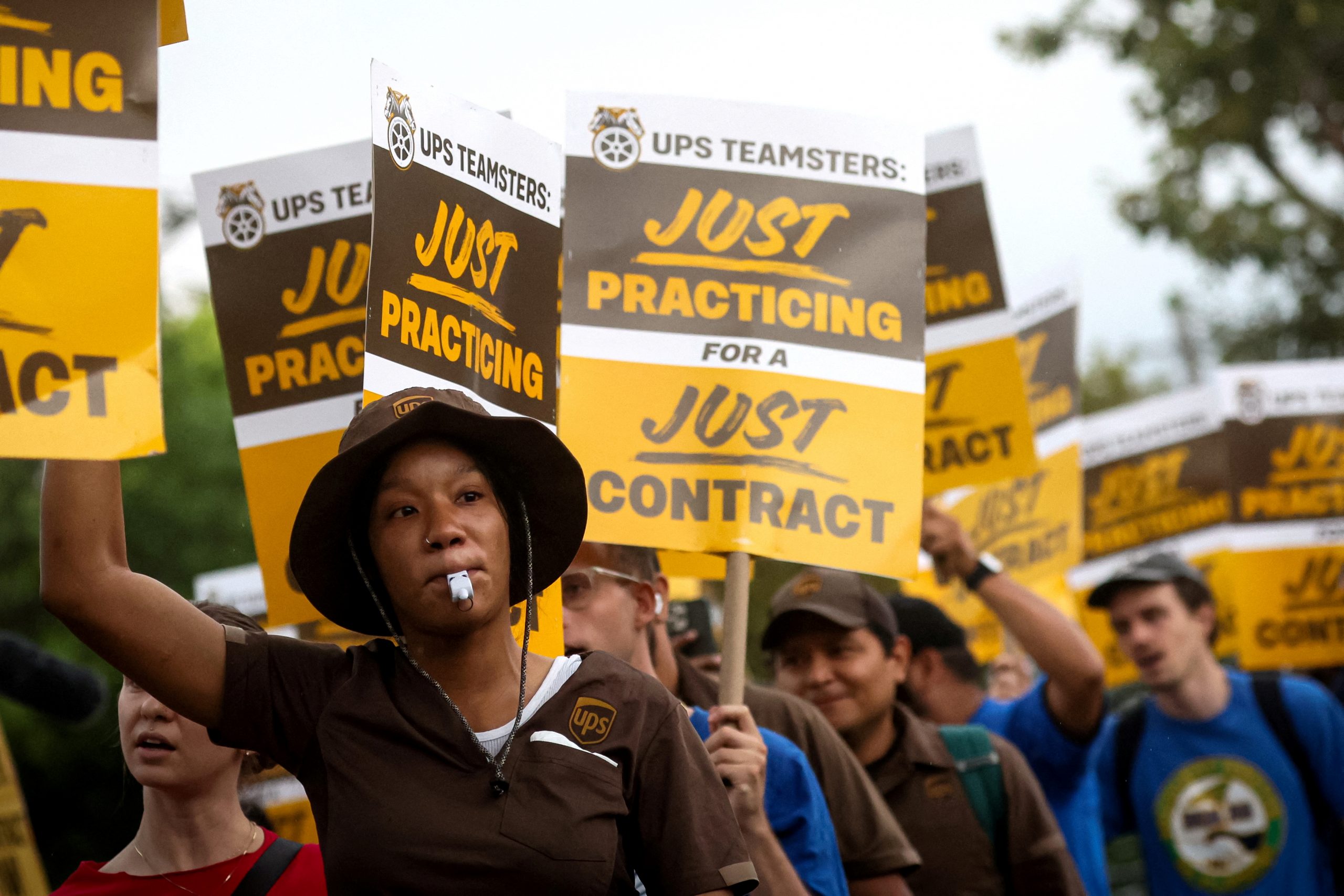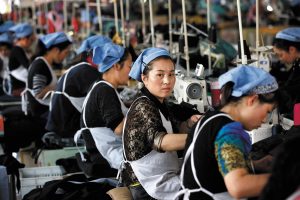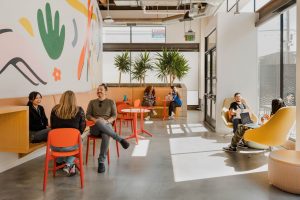Are we in a new golden age for employees—or is it a pandemic-inflated bubble that is starting to deflate?
The case is far from clear. Those who argue for the golden age cite the decades-low unemployment rate, abundant job openings, rising wages and ability of many employees to bargain for perks, such as working from home or longer family leave.
But others say this era already is starting to wane, as more employers want workers back in the office, dozens of major companies have announced substantial layoffs and many people have spent the Covid-era savings that allowed them to be choosy about jobs.
What to believe? The Wall Street Journal asked two economists to weigh in: Harvard University economics professor Richard Freeman , who is a research associate at the National Bureau of Economic Research, and Harry Holzer , a professor of public policy at Georgetown University and a former chief economist for the Labor Department.
Below are edited excerpts from our conversation, which took place online.
The basic divide
WSJ: Will this favorable era for workers endure, or is it a temporary resurgence that already is tapering off?
RICHARD FREEMAN: I view this as the most propitious time for wage and salary workers to improve their economic well-being since the 1950s/early 1960s, when wages increased rapidly and economic inequality was far lower than in the first decade of the 2000s.
I believe strong demand for labor will continue for the foreseeable future. Policymakers learned from the extraordinary recovery from the Covid pandemic compared to the long, painful recovery from the implosion of Wall Street and the Great Recession (2007-09), that giving more attention to full employment works better for the economy writ large.
Even if policymakers seek to increase joblessness to restrict wages and inflation, they will have a tough time. The production of war goods for Ukraine and Israel and to protect our forces overseas will create jobs. The shortening of supply chains and weakening of globalization will add to domestic demand for labor, as will the need to green the economy.
Second, I think that digitalization, artificial intelligence and robots will raise labor productivity and demand for labor.
Finally, unions are increasing their membership and strength. After the success of strikes by auto workers, actors and writers, the Teamsters at UPS won big gains with no strike and the California State University faculty won gains with a one-day strike. Other workers will view unions as a viable path as well.
HARRY HOLZER: I think this era is temporary. Here are things I worry about:
Tight labor markets helped raise wages and reduce inequality in the past few years, but the Federal Reserve is determined to limit future job-market tightness, to keep inflation near its 2% target. And real wage growth hasn’t been all that great since the pandemic, though it has been very good for the lowest-wage workers.
Artificial intelligence will likely boost productivity and average incomes over time, but will also create job losses for millions of workers.
And while unions generated some successful strikes in 2023, collective bargaining in the U.S. remains very low—6% in the private sector. Nonunion firms increasingly squeeze workers with noncompete clauses, outsourcing some of their activities (called “fissuring”) or turning workers into independent contractors.
Misleading indicator
WSJ: Harry, why don’t the near record-low unemployment and high job vacancies point to continued good times for workers?
HOLZER: Job vacancy rates, while still pretty high (a bit over 5%), are now a little misleading—the vacancy rate has been trending up over time regardless of labor market conditions, due to a greater ease with which vacancies are now posted. We are not talking about the kind of labor-market tightness that generated large wage gains in 2021-22.
Meanwhile, the dramatic recovery from Covid came at the price of high inflation. Most economists believe that was mostly due to “supply shocks” like clogged supply chains and the war in Ukraine, but demand was also too high—and driven both by excessive fiscal and monetary stimulus. My sense, from hearing current and former Fed officials, is they plan much more moderation and balance in the future. And, of course, productivity growth is extremely important in terms of what we can achieve for noninflationary wage growth with a moderate amount of stimulus.
FREEMAN: If the recovery of full employment from the Covid pandemic and the support of Ukraine and defense of the U.S. required a brief period of high inflation, so be it. If we have to err, let’s err in the direction of full employment.
HOLZER: The inflation that excess demand generated might have been worth it in some ways—but it has left consumers and voters very sour. Second, some part of deglobalization is certainly necessary—we can’t have our supply chain and especially advanced chips be so vulnerable to foreign developments. But too much deglobalization also has a high cost—in terms of productivity, prices, etc.—and we might be going beyond that optimal point.
Third, I agree with Richard that productivity will soon rise because of spreading AI. But it will likely come with high costs to workers, including those with college degrees.
The future of remote
WSJ: What’s the future of remote work now that many employers are trying to return people to the office—sometimes claiming home workers are less productive—and remote workers often are the first to get laid off?
FREEMAN: Yes, remote workers are less likely to be promoted and more likely to be laid off . But remote workers save, say, one hour a day in commuting, which is worth a lot to them, and firms can save large sums on big office buildings.
I agree new hires should be in the workplace for a while to learn the ropes and that the movement to hybrid can be optimal—three or four days at home and one or two at work.
The evidence on productivity is very mixed. Some employers say workers are not as productive. Others say they are. Workers themselves generally say they are more productive. We do not know the best ways for HR or unions or management to deal with remote workers. But I anticipate that American business and workers will learn ways to make remote work more efficient over time with new technologies, and that the savings from commuting and offices will show up in worker income as well as profits.
WSJ: What became of the “Great Resignation”?
HOLZER: The Great Resignation—when workers were quitting jobs a lot and being choosier about what they accept—is mostly over. Perhaps the biggest cause of declining job quits is that the wads of unspent cash that workers accumulated during the pandemic that made them a little braver are mostly gone.
FREEMAN: Another reason for the drop in quits is people need some time at a new job to decide to quit again.
The impact of AI
WSJ: What types of jobs will AI eliminate? What types will it create? Will the net effect be more or fewer jobs overall in the U.S.?
FREEMAN: Of course no one knows, but on the basis of past technological shocks, the job impact will probably take a much longer period than we currently expect. There is a reasonable chance that AI will benefit less-skilled workers more than the more-skilled. AI robots can do some things awesomely, AI software can do the same, but for the foreseeable future, there are a lot of tasks that require human mobility that cannot be done by machines.
Over the very long run I think there will be fewer jobs, but in the near future I think the union and macro factors will dominate and smart policy will keep the employment rate high, to the benefit of workers.
HOLZER: I hope Richard is right that less-educated workers will benefit more, and be hurt less, by AI than college grads. But I still anticipate a lot of dislocation and displacement over time. Unlike in the EU—and especially countries in Scandinavia—we invest much too little in helping workers retrain, and in supporting them while they do so. And workers will have so little voice in how AI is implemented.
WSJ: Richard, how will less-skilled workers benefit from AI? And Harry, do you agree?
FREEMAN: They will benefit by having some parts of their work done by the program/robot/machine and will be in a more supervisory role of making sure things don’t break down, to assess the value of what the machine did, rather than working on an assembly line.
HOLZER: We continue to see robotics or AI reducing employment for many less-skilled workers—in call centers, retail stores and manufacturing. AI will soon lead to displacement of truck and taxi drivers (though not as quickly as we once thought). Again, much of this will be good for the economy, but will create the need for many workers to reskill in new directions.
One positive development: AI is creating “intelligent tutoring systems” and other innovations that will improve the quality of remote learning and training, and make it more accessible to millions of workers.
Bart Ziegler is a former Wall Street Journal editor. He can be reached at reports@wsj.com .












